
|

|
|
Home Site Search Contact Us Subscribe
|
|
INSIGHT: 2020 Trends in Landscape Architecture Three trends we anticipate growing this year: addressing air quality as part of climate change; cultural and ecological inequities; and converting antiquated roadways into green infrastructure systems. By Jim MacRae, PLA, LEED AP, and Jason Ficht, AICP CUD, APA, ASLA, CNU-A February 13, 2020 As 2020 begins, we are looking at tackling various challenges and harnessing opportunities that face us daily as landscape architects and urban designers to meet the needs of clients and their important projects. There are three trends specifically that we anticipate growing this year: addressing air quality as part of climate change; cultural and ecological inequities; and converting antiquated roadways into green infrastructure systems. We’ve incorporated these trends in recent projects through a performance-based design process that we see being in demand in 2020 and well beyond.
1. Converting an Antiquated Roadway into a Green Infrastructure System
Originally a blighted arterial corridor, the transformation of Bagby Street has led to a paradigm shift for green infrastructure and capital improvements in Houston, Texas. It’s the first public right-of-way that truly changed conventional auto-centric attitudes by creating a “livable corridor” with greater emphasis on the pedestrian realm, urban environment, and a diverse demographic community in the Midtown District, one of the city’s oldest neighborhoods.
Bagby Street establishes a new concept for streets by addressing pedestrian mobility, human comfort, public safety, water quality, and economic development in a sustainable and resilient design. To achieve success, the team first measured existing conditions such as heat-island, noise, crime, and walkability to establish clear and measurable goals for the design. This led to a context-sensitive design solution across 11 blocks. At the site design level, the entire corridor is now stitched together through a common language of materials, plantings, lighting, and signage, which has converted this corridor into a model for green infrastructure as the first certified GreenRoads project in Texas.
The project exemplifies environmental stewardship on multiple levels, and focuses its efforts on various sustainability features such as rain gardens and bio-filtration systems and carbon reduction. It avoided emitting 300 tons of carbon into the atmosphere by using 25% fly ash concrete (equivalent to 12,500 automobile miles per year for 125 years) during construction, and 33% of local storm water is captured by rain gardens. Testing of the rain gardens after construction revealed that 85% of total suspended solids, 75% of bacteria, 73% of phosphorus, and 93% of oil and grease have been removed from the storm water before it’s conveyed back into the local bayou.
According to the results of the Landscape Architecture Foundation’s Case Study Investigation in 2015, the impact of Bagby’s renovation has created $53 million (26%) increase in property values along the corridor in the two years after completion.
Bagby Street has been widely recognized by Houston’s civic leaders as a model for converting older arterial corridors into transformative amenities that improve neighborhoods, businesses, and the urban environment. Because of this project, more and more of our designs are incorporating greenways to benefit a city and all those who live there.
2. A New Paradigm for Cultural and Ecologically Sensitive Urbanism
For centuries, the Tsuu T’ina Nation lived intrinsically connected to Alberta, Canada’s landscape, the seasons, and to the sky. This connection to, and stewardship of, the land is based on the principle of giving back what you take from the land.
In the face of a major infrastructural highway cutting through their land, the Tsuu T’ina Nation is now leveraging the bisected land into a new paradigm of cultural and ecological urbanism. It addresses cultural and ecological inequities that are grounded entirely in their shared values and system of belief. Working with delicate ecologies, layered histories, and potential futures, a new mixed-use development called Taza Park illustrates how the design of parks and open spaces can facilitate territorial reconciliation, cultural and ecological preservation, and the implementation of different values into a pluralistic urban realm.
The driving principles of the
site design were derived from the unique cultural values of the tribe. These
A large central park at its core, Taza Park has planned that links the Elbow River valley to an existing casino/entertainment district and new neighborhoods and commercial centers. The central park will provide a strong sense of seasonality as a cultural and ecologic connection to the Nation throughout the year by closing off areas of the park to accommodate the needs of each region’s inhabitants, be it plant or animal. This approach introduces an opportunity to create widely variable user experiences throughout the year and more importantly allowing for the park space to be shut off and provide the additional silence that keystone animal species need for habitat and fawning. This design approach will improve the amount of key habitats acreage by 50% while also increasing the amount of developable area by 41% over what currently exists today on the property.
The Tsuu T’ina’s relationship with their surroundings is not just about the landscape, as in the Western tradition. Instead, it is vertical. This relationship will manifest itself through a series of seating/performance areas with shade structures. They are designed as concentric circles, reinforcing the importance of self, the circular form of the collective tribe’s composition, the plains and mountains surrounding them, and, finally, the divine. Consequently, the symbol of the circle is found throughout Taza Park’s landscape; strategically placed in places where people can ascend, mentally, to connect to something greater than themselves. In 2020 and beyond, we will see greater needs to incorporate cultural and ecological concepts in parks and open spaces as a new paradigm for landscape design.
3. Climate Change: Addressing Air Quality, Greenhouse Gas, and Beautification at a City Scale
Landscape architecture can play an essential role in helping to mitigate climate change and create places that can adapt to rising tides and temperatures, and increased drought, and floods. Design Workshop recently completed a City Urban Greening Plan for the City of Fontana. Located in the hot, dry climate of California’s Inland Empire, Fontana suffers from poor air quality, drought, and wildfires. Only 0.36% of the land in Fontana is covered by trees. Meanwhile, the population is growing, and developments are rapidly filling out the city. In three scales, the master plan employed trees and landscape as green infrastructure to alleviate environmental and developmental pressures, and to help transform the city into a complete community.
The design team, in collaboration with residents, and local and state governments, researched quantitative benefits of individual trees and proposed a tree palette specific for Fontana. At the site scale, best landscape design practices were applied to reconfigure example streets and land-use typologies. At the citywide scale, the team proposed systematic urban greening strategies, including green streets and green places. Besides planting new trees, the plan also emphasized the significance of preserving existing trees. Eventually, with recommended regulations, the plan is set to reach 5% tree canopy coverage in the next 30 years – an increase in coverage of over 1,300%. The existing 71,574 street trees inventoried provide $6,819,240 annual benefits to the city. With the new tree palette application, and proper existing tree preservation, trees and landscaped areas will become invaluable community assets for Fontana.
To increase the number of new trees in the city, the plan established an urban greening framework for future implementation. The framework includes two general categories: green streets and green places (land-use typologies). Green streets are composed of best scenarios of all street types, vegetated highways, and gateways to the city, making it a connected green system. Green places include best scenarios of all land-use typologies, overlaid with fire hazard zones. With all proposed green streets and green places, the team calculated the plan’s impact on citywide greenhouse gas reduction. Even though the overall reduction was only 1.58%, parks and open space stood out with a 15% greenhouse gas reduction within its own category, which proves the significance of parks and open space systems in a city.
We are seeing more and more of our clients looking to increase tree canopy in their projects because of its multiple benefits, big and small.
Solving the challenges of climate change, cultural and ecological inequity, and antiquated infrastructure will take a collaborative effort by design and engineering consultants, city officials, community leaders, real estate developers, investors, and citizens. As practitioners, we believe that we must act now by adopting a performance-based design process that leads to equitable and context-sensitive solutions that result in measurable economic, social, and environmental benefits for every place and everyone we serve.
Jim MacRae, PLA, LEED AP, is a principal at Design Workshop, an international landscape architecture, planning, and urban design firm. His career has taken him across the globe, which has sharpened his technical capacity and his appreciation for working in diverse natural and urban environments. He has broad expertise, but is best known for his planning and design of thoughtful urban environments, including transit-oriented and mixed-use districts, commercial corridors and streetscapes, urban parks and plazas, and workspaces, as well as sustainable new communities.
Jason Ficht, AICP CUD, APA, ASLA, CNU-A, is an associate at Design Workshop based in the Los Angeles studio. He leads master planning projects internationally for both public- and private-sector clients, including walkable new towns, transit-oriented development, multi-modal corridor revitalization, high-density mixed-use site plans, urban greening strategies, design guidelines, and form-based codes, among others. He is active in the ULI and is on the National Suburban Redevelopment Product Council. Recently, Ficht led a ULI Technical Advisory Panel focused on making recommendations for the Santa Ana River and adjacent redevelopment opportunities. |
(click on pictures to enlarge) 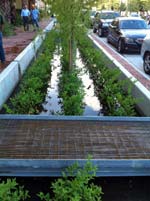 Jim MacRae Bagby Street, Houston, Texas: On average, rain gardens remove 93% of the oil and grease on average from the roadway drainage system. 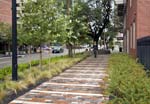 Jim MacRae Bagby Street: New trees and decorative paving reduce the surface temperature of the sidewalks by 14 degrees on average. 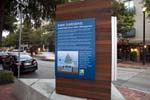 Jim MacRae Bagby Street: The branding of green infrastructure along the corridor saw property values of adjacent buildings increase 26% increase from 2013-2015. 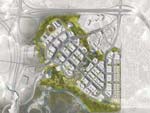 Jim MacRae The Tsuu T'ina Nation's Taza Park is designed as a sustainable and culturally appropriate mixed-use development in Alberta, Canada. 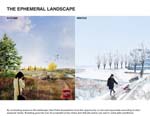 Jim MacRae At Taza Park, access and amenities within its central park will change depending on the season, creating a better symbiotic relationship between humans, flora, and fauna.  Jason Ficht City Urban Greening Plan for the City of Fontana, California: Air quality improves with trees that act as natural filters and provide maximum benefits when planted near pollution sources such as roadways.  Jason Ficht Fontana, California: Southern California's geography, topography, and reliance on automobiles result in some of the nation's worst air pollution. Urban Greening at a regional scale has the potential to mitigate much of the harm caused by pollution. |
© 2020 ArchNewsNow.com